The Case Against Fair Weather Waterfowl Hunting
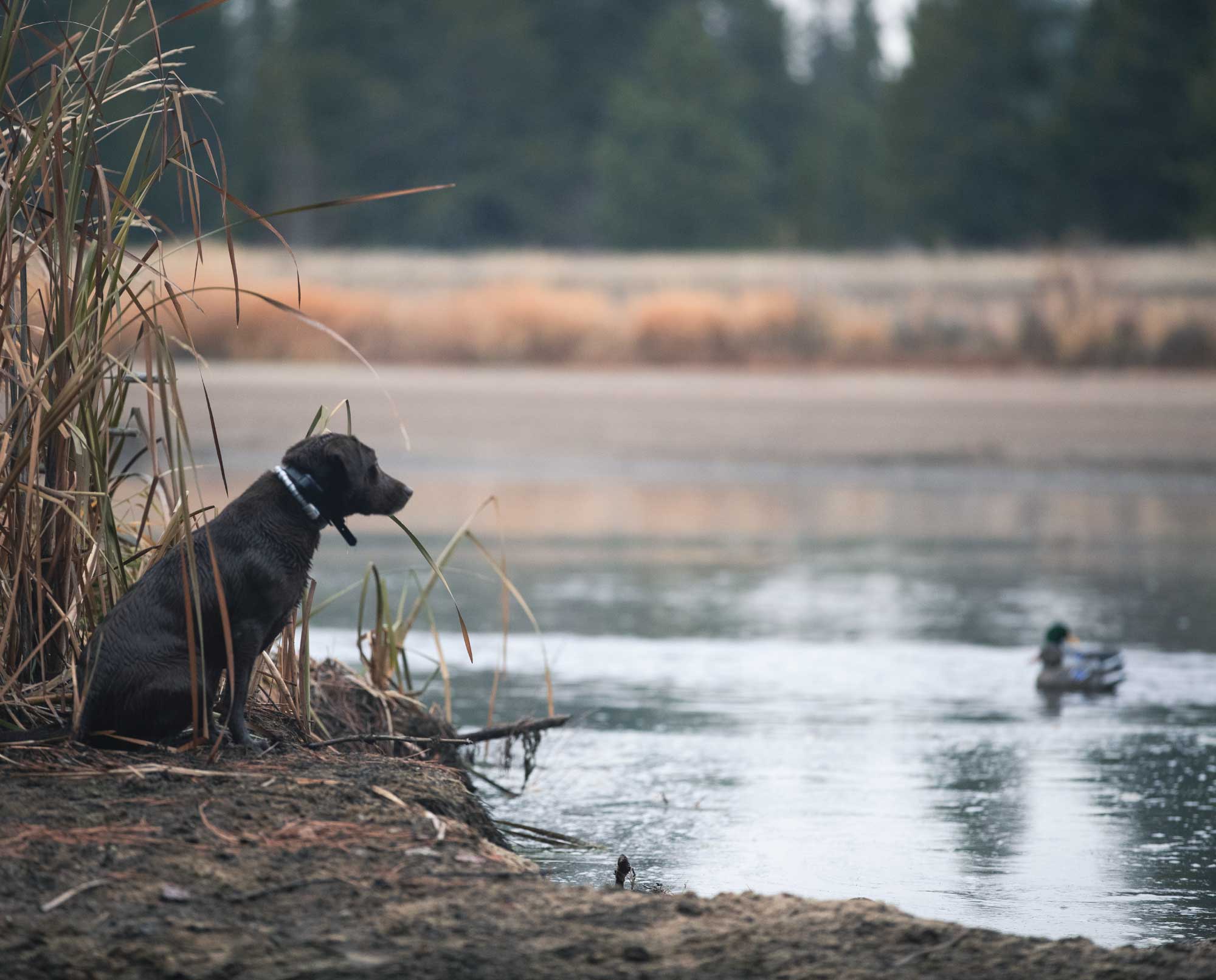
Foul-weather hunting can bring the best opportunities when other hunters are staying home
There are many obligations in my life that distract me more than I’d like from hunting and fishing. Work, farm life and family all pull my attention out of the woods. Yes, there are days when I just can’t justify spending all day in the duck blind or tree stand. But as many excuses as there are to keep me out of the woods, I never allow weather to be one of them. As the saying goes, “a smooth sea never made a skilled sailor.”
Why you shouldn’t be a fair-weather hunter
A fair-weather hunter is someone who is only found hunting or fishing when it’s a blue bird day and the sun is shining high and bright. It seems as though precipitation has the power to stop most folks from even entering the woods. Most people will consider this a “lost day.” Don’t be most people. Time and again I have found myself completely alone in areas that are usually littered with hunters or anglers, all because a low-pressure system is threatening to dump a few inches of snow or rain. I have experienced some of the best hunting and fishing during these rare moments of respite. These days are essential for accessing areas without alerting animals to your presence, determining what sign is the freshest, what specific food sources are being targeted, and overall, broadening your understanding of the game you are pursuing. Animals also tend to be a little more one-track-minded on such days, seeking food and shelter usually in conjunction with each other. Coupled with the lack of human presence, it’s sometimes hard for me to settle on a place to hunt.
As the climate patterns continue to shift across the globe, extreme weather events become the norm. Hunters must adapt to these effects to successfully take advantage of the hunting seasons. The grow season in the foothills of the White Mountains of New Hampshire is typically mid-May to mid-September. Lately, however, we have been experiencing more snowstorms throughout the early spring compared to late fall and early winter. This climatic shift has also led to prolonged periods of drought throughout the summer and a much wetter fall season. This means more chance for snow during our spring turkey season and a higher probability of heavy rainstorms during waterfowl and deer seasons. But, if you are determined enough to make every effort to get into the woods regardless of the forecast, then you can capitalize on opportunities you, and many others, otherwise would have missed.
While rain and snow tends to put a damper on most human activities, fish, birds, and most game have no choice but to continue life regardless of significant weather events. This seems especially true when it comes to waterfowl. I have shot more ducks and geese in driving rain, sleet, fog and snow than I have on clear, sunny, warm days. Most rainy day duck hunts I’ve been on were fast in-your-face shoots, ending almost as quickly as they began with a limit of dabblers. Sure, you may be soaked from boots to barrel, but there is nothing better than successfully executing a hunt in less than desirable conditions and coming out the other side, all the wiser and more grateful for the roof above your head and the food on your table.
In 2017, the year was punctuated by major flooding events, one of which completely obliterated a local NHFG fish hatchery along the Baker River. Heavy rains at the end of October led to massive flooding along the Pemigewasset River and its tributaries. Jumping on the opportunity, my brother and I spent the earlier part of the storm scouting groups of ducks and geese in some of our favorite spots. With more rain in the forecast and rivers already breaching their high water marks, we figured half our spots would be inaccessible because most of the routes in would be inundated. We adjusted our strategy and scoured the local agriculture that parallels the rivers.
In the contour of an extinct oxbow, long cut off from the river and since cultivated for years, we happened upon several hundred mallards and black ducks piling into a newly flooded cornfield. In the adjacent block of oaks and beech we could hear wood ducks whistling, and somewhere on the far side of the field, a hundred geese were trumpeting. If there’s a waterfowl hunting heaven, this is what it must look like. We silently sat and watched the geese loaf along the back of the flooded oxbow and feed across the hillside. Strings of mallards worked their way through the submerged corn stubble, like feathered vacuums, devouring the left over crop.
The next morning with a loose plan in hand, we let the river dictate our access and setup beneath overhanging pine bows overlooking a transition between the timber and the corn. With limited time available before work we quickly threw out a string of floaters in front of us with a few full-bodies making their way up the corn. As dawn quietly approached, the torrent of the river was interrupted by a flurry of wings and whistles. The wood ducks were the first to arrive. They left as quickly as they came, albeit fewer in their ranks. After several agonizingly long minutes, the mallards graced us with their presence, settling amongst our spread. A few volleys and a couple handfuls of ducks later, we marched out of that flooded field soaked and grinning. We spent the next three days hunting that spot and hit our limits two out of three days. A week later there was a foot of snow and the river was frozen.
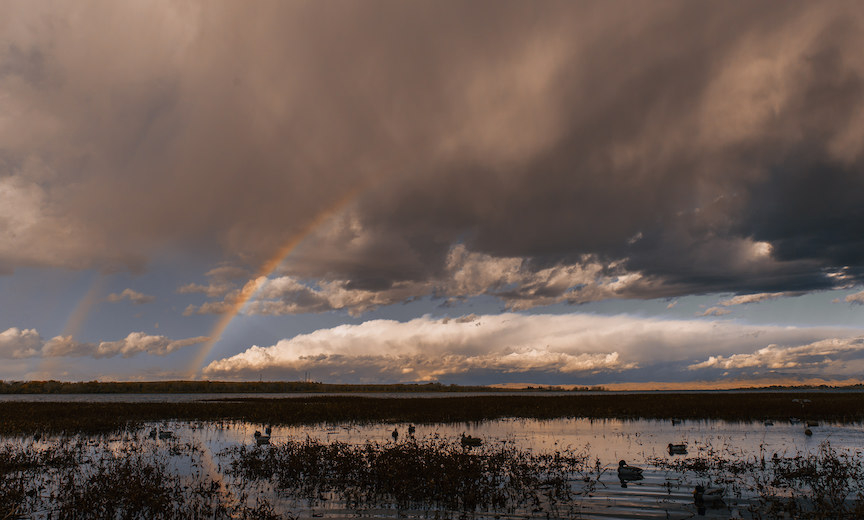
Tips for making the most of foul weather hunting
Hunting on short notice, over a new feeding ground, in an area that birds can’t typically access via water usually leads to grumbling and a dose of ibuprofen. To pull off a hunt in driving rain and in close proximity to a swollen river takes both luck and skill. The luck is finding the birds; the skill is in beguiling them. It’s through quiet observation that I’ve learned where and how to hunt. I don’t advise chasing divers in open waters when the water is choppy and the wind is howling, unless you like constantly chasing decoys and bilging water out of your waders or boat. During storms, time is better spent hammering the backwater with plenty of cover, while freshly flooded cornfields almost always make for great puddle duck and goose hunts. Of course, finding the X is always first and foremost, especially when the forecast is set to change.
With seasons as short as they are and limits constantly subjected to changes in population size, today’s hunters should seize any opportunity to get outdoors in order to succeed. If time is taken to properly scout and understand the behavior patterns of the animals you intend to pursue, your success rates will climb. Utilize every rare, solitary moment in the woods to sharpen your hunting skills, especially when most people are still relaxing at home, out of the woods and out of the mire.



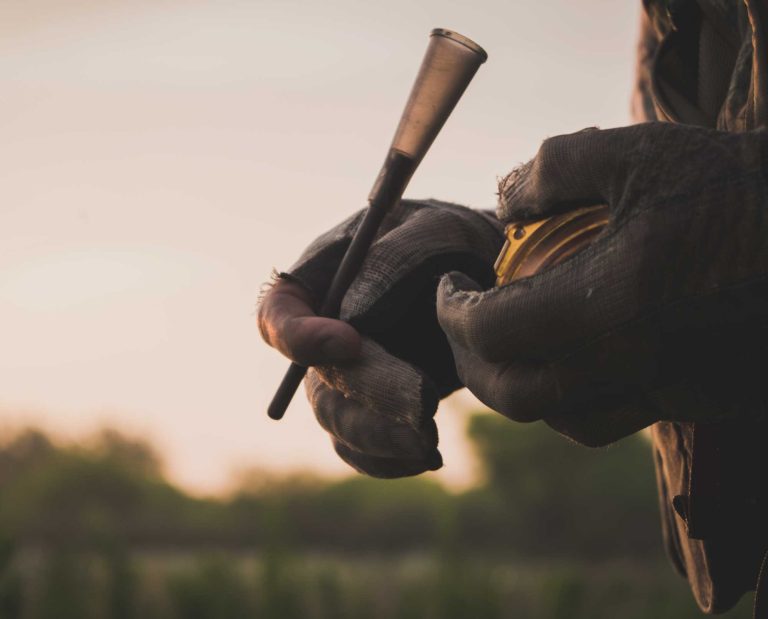
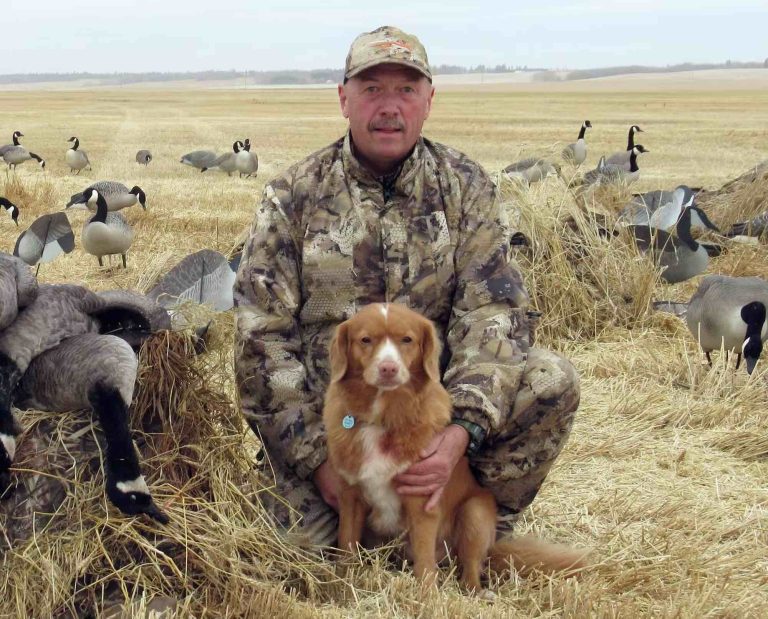
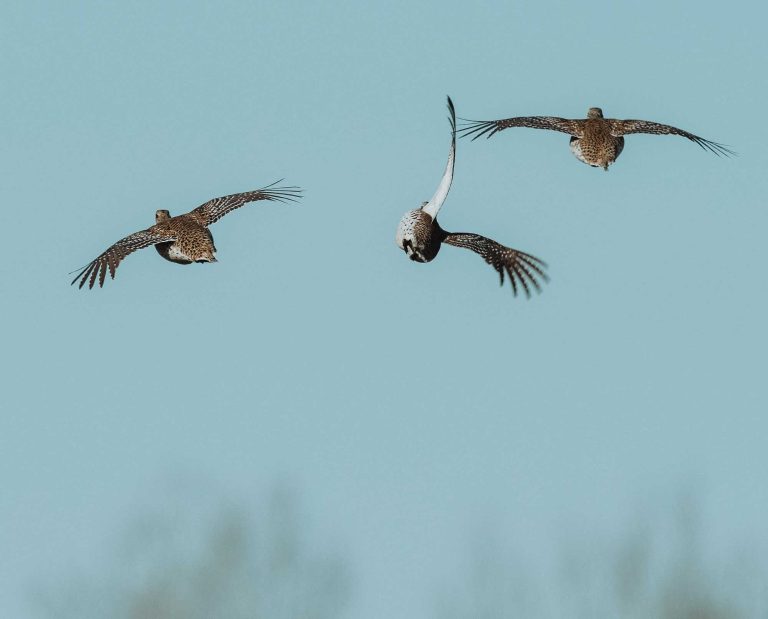
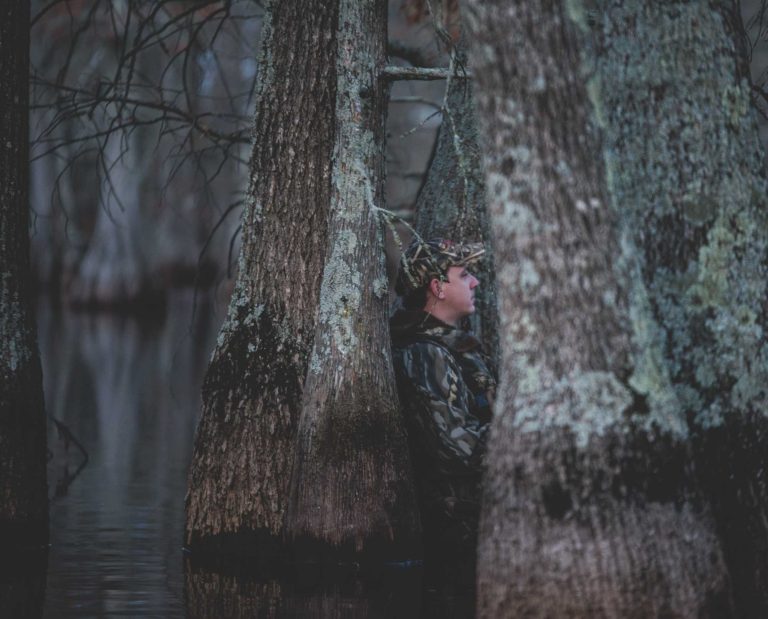

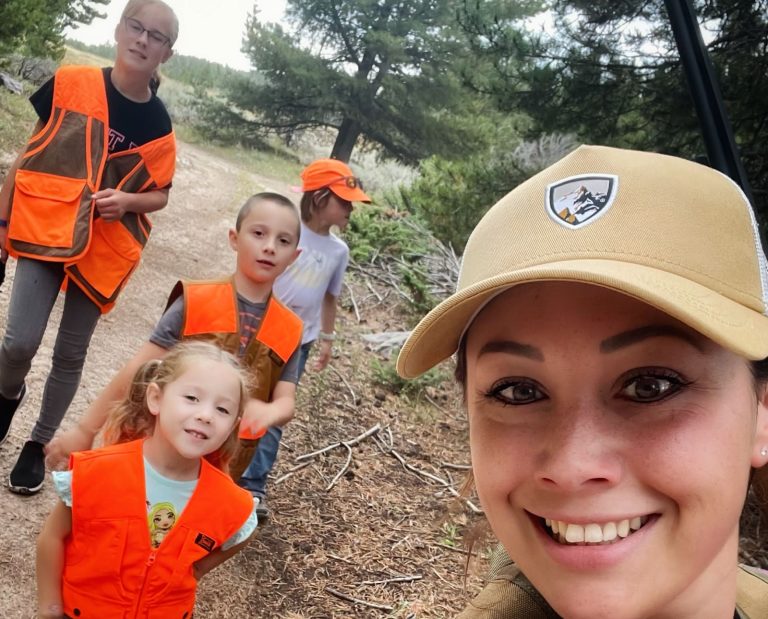
Enjoyed your article. Hunting is still there if we go and find!